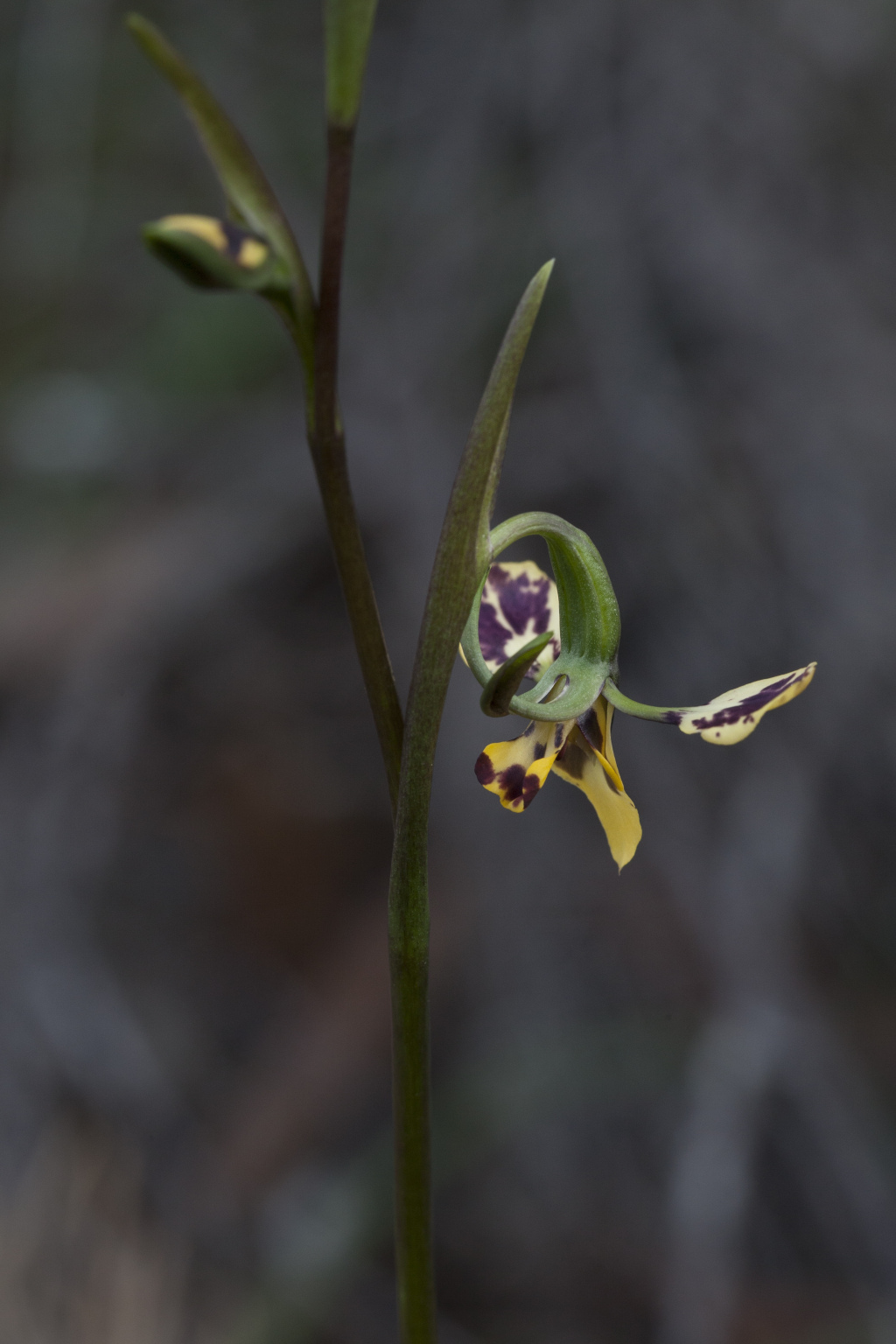Diuris pardina
Lindl. Leopard OrchidFlowering plant slender, 14–40 cm tall. Leaves 2 or 3, linear, channelled, 10–30 cm long. Flowers 2–10, orange-yellow, heavily blotched with dark brown; pedicel (excluding ovary) 1–3 cm long, slender, partly enclosed within tapered bract; dorsal sepal obliquely erect, ovate, 8–12 mm long, apex often recurved; lateral sepals deflexed, recurved, parallel usually strongly crossed, sickle-shaped, 10–18 mm long, green with darker markings; petals obliquely erect to recurved, 10–20 mm long, claw to c. 7 mm long, blackish, lamina ovate, usually heavily blotched on outer surface. Labellum projected forward, 5–7 mm long, 3-lobed; lateral lobes about as long as mid-lobe, oblong, asymmetric, distal margin slightly scalloped; mid-lobe wedge-shaped, strongly folded; callus of two raised fleshy ridges extending from base to proximal portion of mid-lobe, ending in 2 teeth. Column wings about same height as anther. Flowers Aug.–Oct.
LoM, MuM, Wim, GleP, VVP, VRiv, MuF, GipP, OtP, Gold, CVU, GGr, DunT, NIS, EGL, EGU, WPro, HSF, HNF, OtR, Strz, MonT, VAlp. Also SA, NSW, ACT, Tas. Widespread and locally common in the southern half of the State, occurring in heathlands or drier open-forests.
The previously used name for these plants, Diuris maculata Sm., actually refers to an endemic of the central coast of NSW. Diuris pardina is later-flowering and has more heavily blotched flowers which are mostly orange-yellow rather than bright yellow. There is considerable morphological variation within D. pardina and at least one variant from western Victoria seems to represent a distinct species. Diuris brevissima W. Fitzg. ex Nicholls, a NSW endemic that resembles Diuris pardina, has been incorrectly attributed to Victoria.
Hybrids between D. pardina and D. chryseopsis have been referred to D. ×palachila, but that taxon refers (strictly) to hybrids between D. pardina and D. behrii. Diuris pardina is also known to hybridize naturally with D. orientis, D. sulphurea and D. palustris. Many of these hybrids can back-cross with either parent species creating a confusing array of intermediate forms (Jones 1988).
Entwisle, T.J. (1994). Orchidaceae. In: Walsh, N.G.; Entwisle, T.J., Flora of Victoria Vol. 2, Ferns and Allied Plants, Conifers and Monocotyledons, pp. 740–901. Inkata Press, Melbourne.
 Spinning
Spinning


